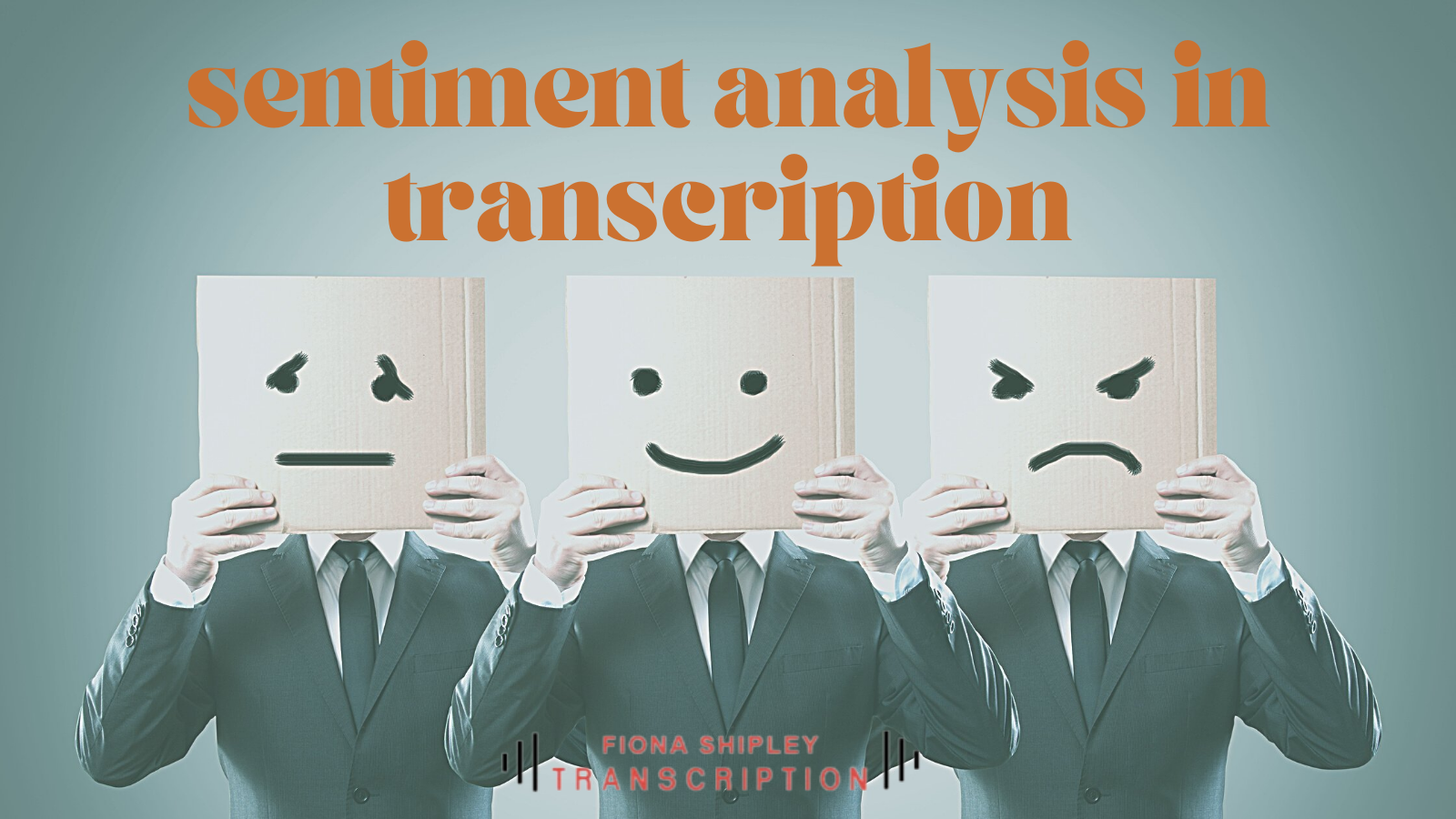We’ve spoken before about how AI currently struggles to deal with some key aspects of transcription, one of which is understanding the emotions behind what’s been said.
But those who are behind the development of AI are very much aware of the shortfalls of the technology and are constantly striving to find solutions to the challenges of understanding what or how a customer is thinking. This is known as sentiment analysis.
What’s sentiment analysis all about?
Sentiment analysis is beginning to gain traction in a number of ways – even outside the sphere of transcription. Businesses are starting to realise why making the most of sentiment analysis and capitalising on the benefits it can bring to an organisation is a wise move.
Being able to determine the emotional value of communications is emerging in a range of use cases, from meeting transcription to customer service and feedback. It’s being widely used in contact centres so that they can understand how customers are feeling which then enables agents to deliver a better customer experience.
One such example mentioned in the article above showed how sentiment analysis played a key role in a project for a domestic car company. The emotions of customers around car features for all the major automotive manufacturers was analysed to see how customers felt about particular features such as the cup holders in one model vs the competitors’ version, or competitors’ interiors vs those of the client.
The company used the data it received from this sentiment analysis to determine exactly what customers liked about its products, and where it lagged behind its competitors — analysis that became fuel for better and more effective advertising.
Getting sentimental within transcription
When it comes to transcription there’s one particular area where we’re told by our clients that understanding the emotion can make a huge difference in being able to see the full picture.
When researchers are investigating a topic they turn to a range of sources. One-on-one interviews and the analysis of their transcripts is a common method for researchers to delve into the subject and gain a more detailed insight. These insights are highly subjective and lack objectivity. Without the right sentiment analysis, the insights can seem “flat” and the real meaning being conveyed at the time can be missed.
Limitations of current technology
Most virtual meeting platforms offer transcription services. Microsoft and Google offer out of the box voice recognition, with Zoom also about to offer live transcription to customers. And there are a multitude of third party organisations offering these types of services.
But computer transcription is a poor substitute for human transcription. The role that human judgment plays at being able to determine what’s important within a recording, accurately show what the next steps are, and who committed to what cannot be underestimated.
And while some organisations may only need a very basic level of transcription service, we work with clients for whom nothing short of an accurate, detailed record will do. Indeed some clients have come to us to rework content that’s been created using AI – experiencing first hand that AI for transcription can be a false economy.
To find out more about how Fiona Shipley provides outstanding transcription services to our clients, please get in touch via alex@fionashipley.com

